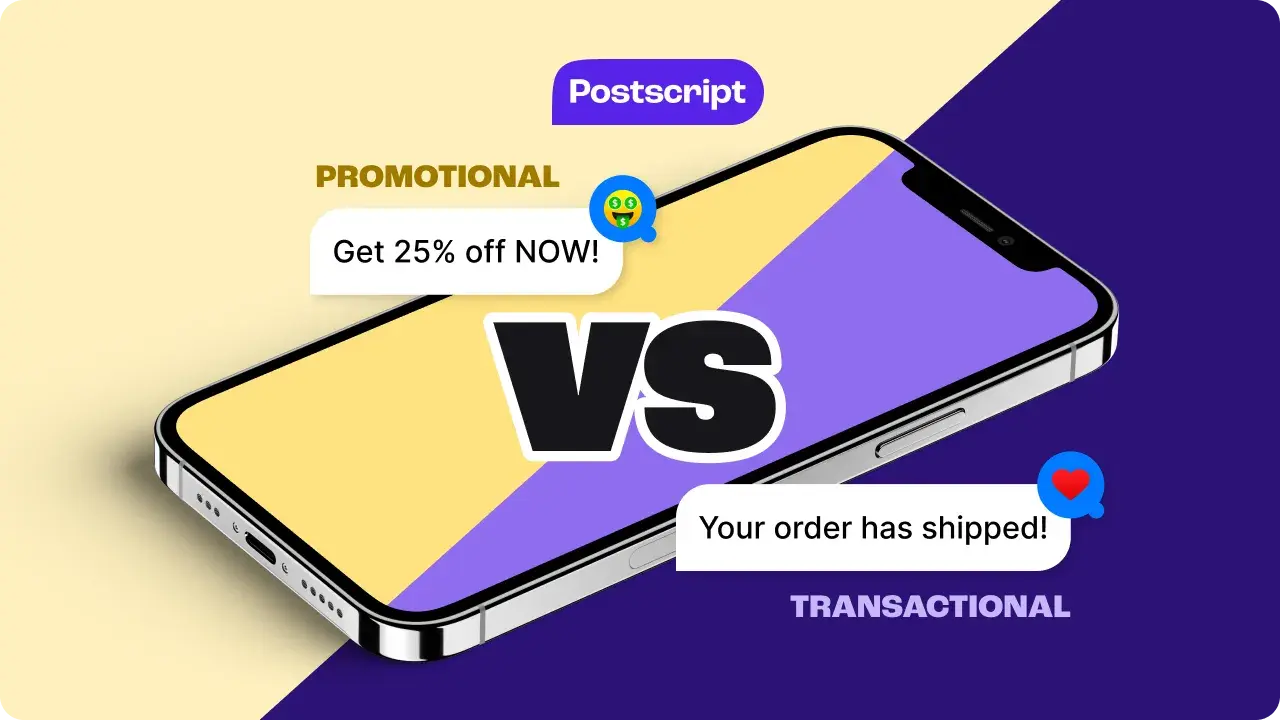
Access premium content. Become an SMS expert.
Join over 10,000 other marketers who get weekly insights delivered directly to their inbox.
We are big fans of privacy. See our Privacy Policy for more information.
Promotional vs. Transactional SMS
What They Are and How to Use Them
Don’t you love how easy it is to redeem a coupon from your favorite brand when it’s sent directly to your phone?
Just like your friends text you major life updates, your favorite brands love to communicate with you via SMS, too.
If you’ve ever received a text message from a brand sharing a thank-you message, product news or updates, a discount code, booking or order details, or shipping alerts, then you’ve engaged with that business's SMS marketing.
SMS marketing is one of the easiest, fastest, and most cost-effective ways to communicate with your brand's audience.
It’s also one of the best ways to boost customer engagement rates. With SMS, businesses can send valuable, instantaneous messages to a large list of people in their target audience.
Considering SMS marketing messages have a 98% open rate, it’s no surprise businesses choose this marketing method to engage with consumers.
There are a lot of ways businesses can use SMS marketing: from alerting shoppers about their available loyalty points to sharing company updates or sales events, SMS allows businesses to engage with their audience in a way that creates a positive and mutually beneficial relationship.
There are two types of text messages businesses send: promotional SMS and transactional SMS. These two message types have different purposes, content, compliance rules, and sender information.
Before you start using SMS for marketing, it’s important to understand the differences between these two categories (and how each can be valuable for your business).
Let’s dive into these two SMS marketing categories.
In this article (click to jump to a particular section):
What are the key differences between promotional and transactional SMS strategies?
What’s the purpose of transactional SMS vs. promotional SMS?
What are some examples of promotional and transactional SMS from leading ecommerce brands?
Integrate with a leading SMS tool to optimize your ecommerce marketing stack.
What is promotional SMS?
Promotional SMS includes text messages that businesses send for marketing or advertising purposes. Brands mainly use promotional SMS to promote their products or services and generate customer interest—and to drive engagement from target consumers in a more direct and efficient way.
An example of promotional SMS is when a company sends a special coupon code providing a discount on one or more of their products, like this example from NaturAll Club.
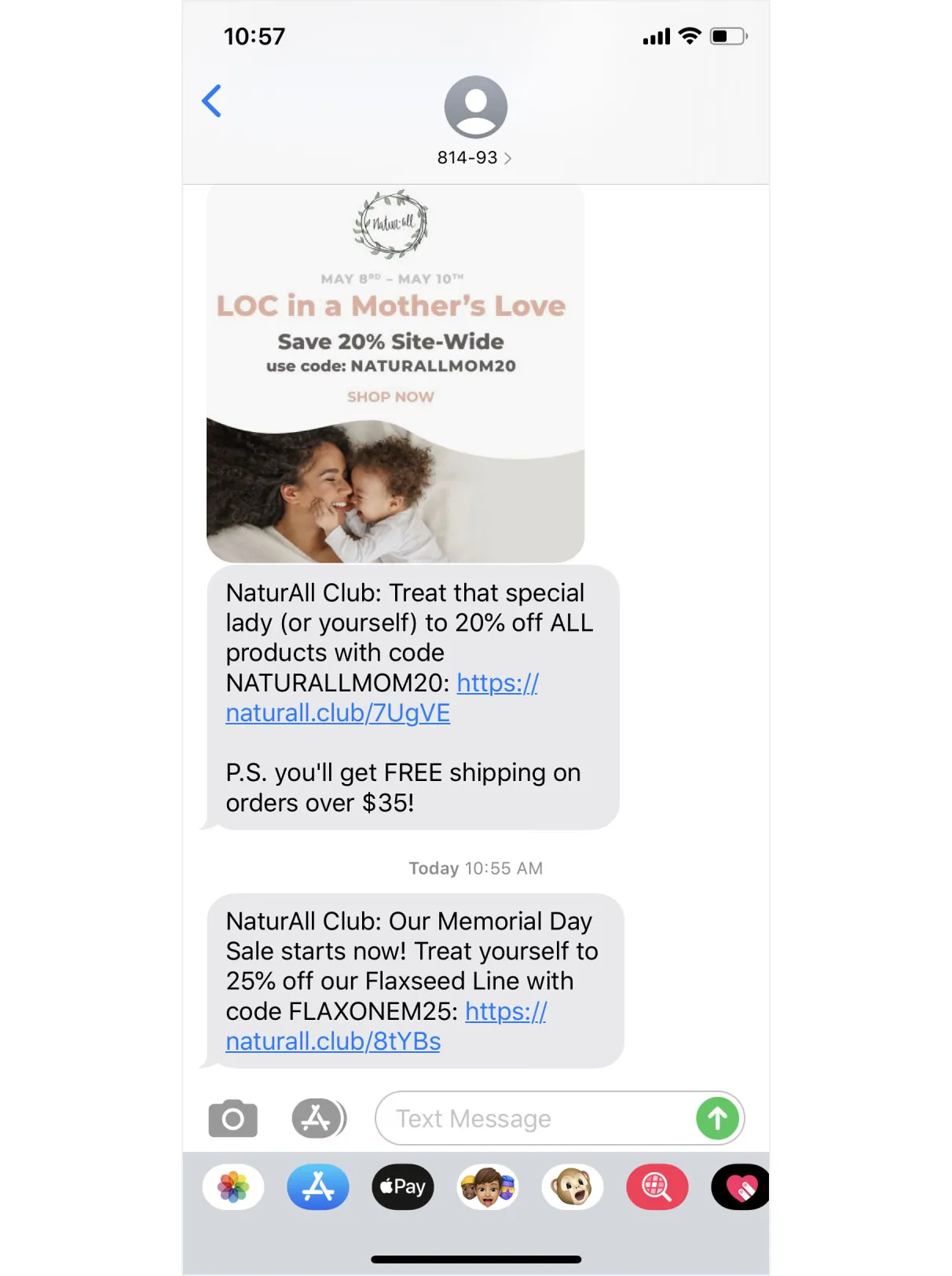
What is transactional SMS?
Transactional SMS is used by businesses to relay transactional information.
Through this type of SMS, businesses can reach customers directly to share important non-promotional information—like order status, delivery notifications, and more.
Check out this example from Imperfect Foods.
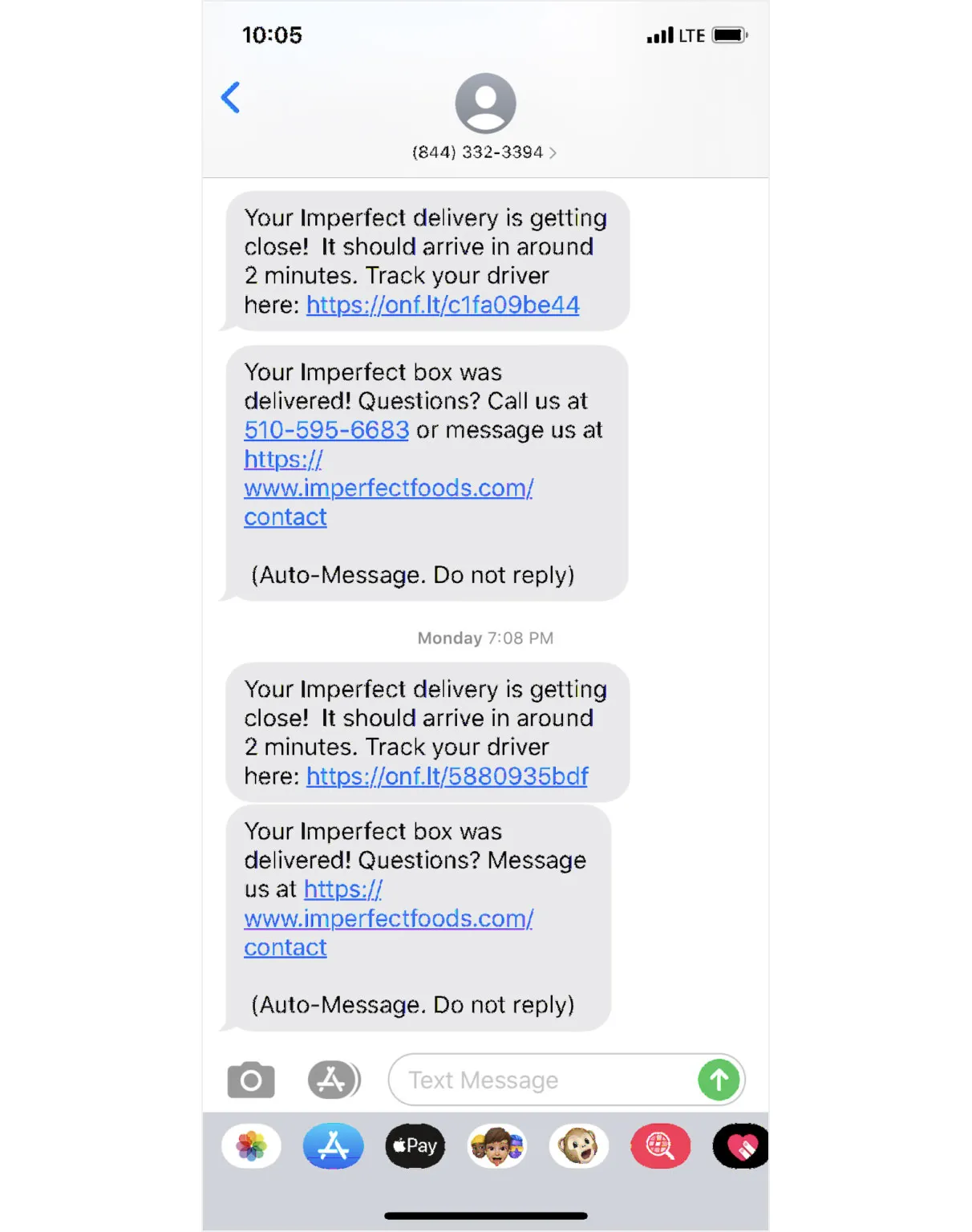
One of the most common examples of transactional SMS is when a customer receives a text message updating them on their order status or shipping progress for an online order.
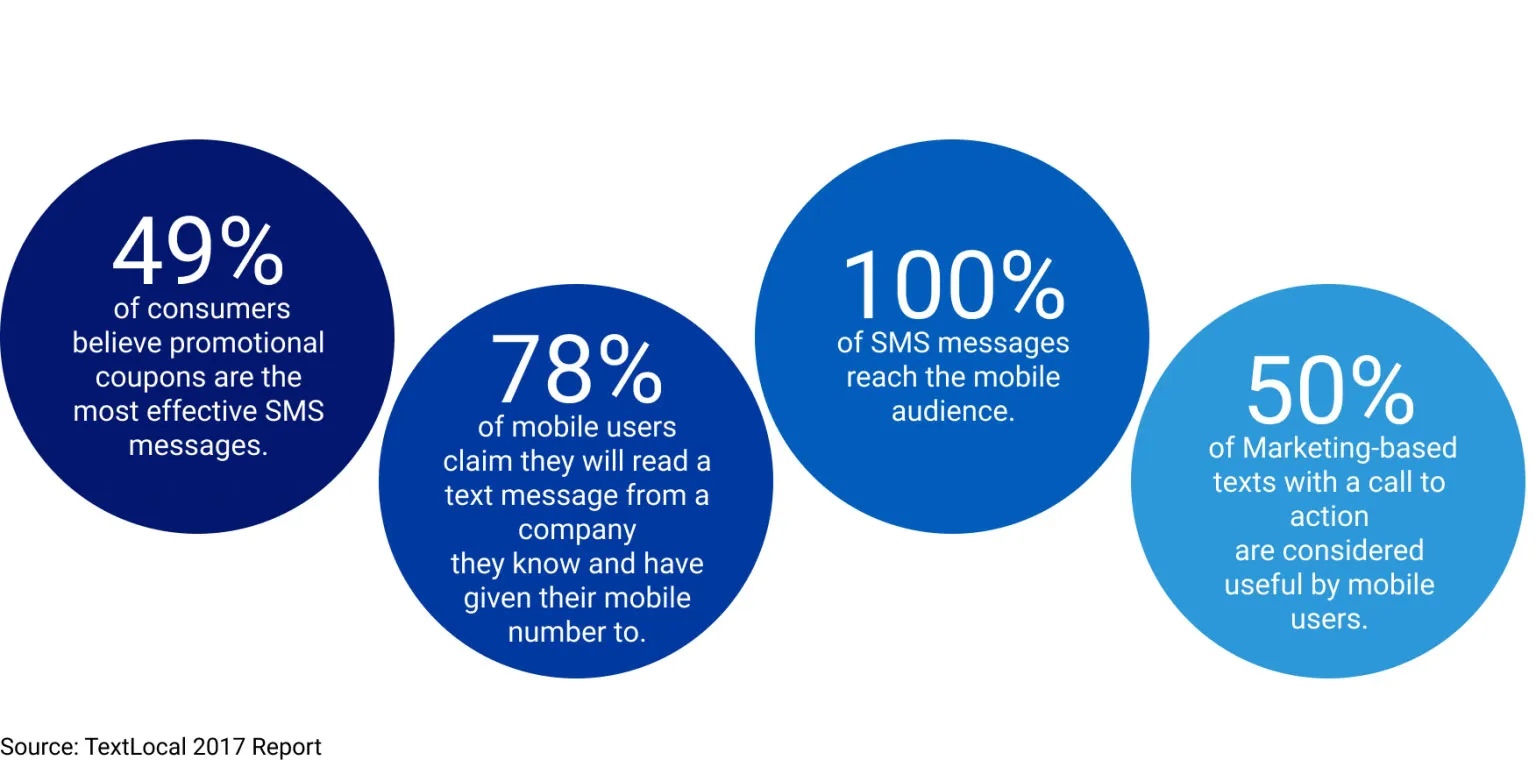
What are the key differences between promotional and transactional SMS strategies?
Now that you know what promotional SMS and transactional SMS are, let's talk about strategies for using them in your business.
Each type of message serves a different purpose, and there are key differences in the compliance laws governing each. Specifically, the Telephone Consumer Protection Act (TCPA) requires businesses to follow different rules depending on whether they’re sending promotional or transactional messages. Understanding what these differences are—and how promotional SMS and transactional SMS function independently and in tandem—will help you make more informed decisions about what type of message you should use, and when.
Let's start with the purpose of each message type.
What’s the purpose of transactional SMS vs. promotional SMS?
To break it down simply, consider the type of reaction you’re hoping to get from your customers when you send a particular message. What action—if any—are you pushing them to take?
Define your business goals for the message and identify the metric(s) you hope the message will improve. This will help you decide which type of message you should send.
For example, if you’re hoping to increase website traffic, subscriber engagement, customer retention, or purchase rate, then your message will likely fall into the promotional SMS category. (Promotional text messages can be great for impacting all of these metrics, because text messages containing coupons are redeemed 10 times more than coupons promoted in other ways.)
However, if you’re hoping to build brand credibility, foster a positive buying experience, or notify your customers about important order details, then transactional SMS may be a good solution. In fact, more than 50% of customers prefer transactional SMS over other forms of communication for support-related topics.
Many businesses use both of these SMS strategies—especially ecommerce brands. It’s common for online stores to send certain segments of customers or subscribers messages about new product launches, coupon codes, or sale announcements. If you’ve given a brand your phone number, you've probably received these types of promotional messages.
Ecommerce brands also often use transactional SMS to provide shipping updates. Your business isn’t restricted to one type of strategy, and both can drive positive business outcomes in different ways. The key is to always focus on delivering value to your SMS subscribers.
Timing and Promotional vs. Transactional SMS
Whatever SMS strategies you adopt, it's important to note that businesses can’t just send SMS messages whenever they want. Every country has different laws around SMS timing, but Canada and the U.S. abide by the Telephone Consumer Protection Act (TCPA).
According to this set of regulations, in order for a business to send a promotional text message, the recipient has to opt in via written consent. Furthermore, businesses cannot send promotional SMS messages before 8 a.m. or after 9 p.m. local time. (Some states have imposed even stricter time windows. Florida, for example, only allows promotional texts between the hours of 8 a.m. and 8 p.m. in the recipient’s local time zone.)
Transactional SMS messages, on the other hand, are not subject to these regulations. Because these messages are not for promotional or marketing purposes, there are no time restrictions around when businesses can send them. Transactional SMS messages can also be sent to all recipients—regardless of DND (do-not-disturb) status.
Sender ID
Regardless of what type of message you're sending, it’s important for your business to have a sender ID. This is the unique name or number that pops up every time you send a subscriber an SMS message. Setting up your sender ID will help you stay on-brand with your SMS marketing efforts. Whether you choose a long number or a short code, the sender ID must be associated with a pre-approved U.S. address, and it must be included in every SMS communication sent by your business. This is critical for adhering to SMS marketing compliance rules.
Compliance and Promotional vs. Transactional SMS
As noted above, the TCPA determines SMS compliance rules, but the rules are different for promotional SMS versus transactional SMS. Promotional SMS messages cannot be sent to anyone in your customer base that has their status set to do-not-disturb (DND)—or anyone who has not compliantly opted into receiving your texts.
So, any messages containing information about a new product, a discount code, a sale announcement, or any other promotional content cannot legally be sent to these people. Violating these rules can get you slapped with fines starting at $500 per message sent. (For more details, refer to these rules outlined by the TCPA.)
As for transactional SMS, the compliance rules are slightly more lenient due to the fact that transactional messages are informational and may be necessary for the customer to receive—no matter what their DND or opt-in status is.
Transactional SMS can be sent to any customers at any time of day, but it must be clear that these messages are not meant for marketing purposes. If a transactional text incorporates any promotional content, it can lose its transactional status—and your business would be at risk of breaking compliance laws. This is why it’s beneficial to outline the purpose of each message in advance so you can properly categorize it as either promotional or transactional—and then follow the appropriate TCPA compliance guidelines.
What are some examples of promotional and transactional SMS from leading ecommerce brands?
The best way to get a grasp on transactional and promotional SMS is to see each one in action for yourself. And there are plenty of examples to go around, because as we've (hopefully) made clear, ecommerce and direct-to-consumer brands use promotional and transactional SMS messages all the time to connect with their consumers. Let’s go over a few examples from leading brands doing this well.
Transactional SMS Examples
Here's how a few up-and-coming and popular brands write their transactional SMS messages. Hopefully these examples can help inspire you to create your own. Bonus: These examples are also TCPA compliant!
1. Order status
Order status texts are some of the most common transactional SMS messages ecommerce consumers receive. When shoppers choose to receive shipping updates, they’ll get the kind of message shown in the example below from Rent the Runway. These types of messages can include the following status updates: your item is on hold, being processed, preparing for shipment, shipped, and en route.
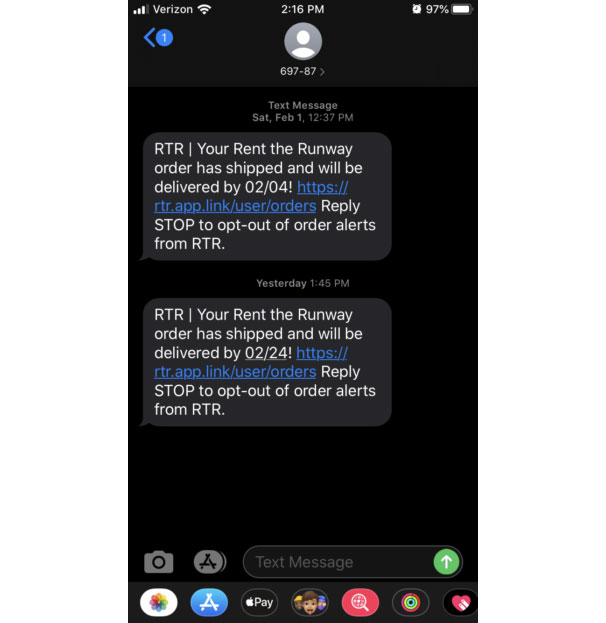
An automated shipping SMS message from Rent the Runway.
2. Delivery notification
Just as the name suggests, a delivery notification is sent when a shopper’s package is out for delivery or has been delivered. This type of transactional message goes out after the customer has received all applicable shipping updates. So, although order status and delivery notifications are similar, delivery notifications are always the second step after order status updates.
For example, a business might text you that your package will be delivered in an hour. Then, they may text again to let you know that it has been delivered.
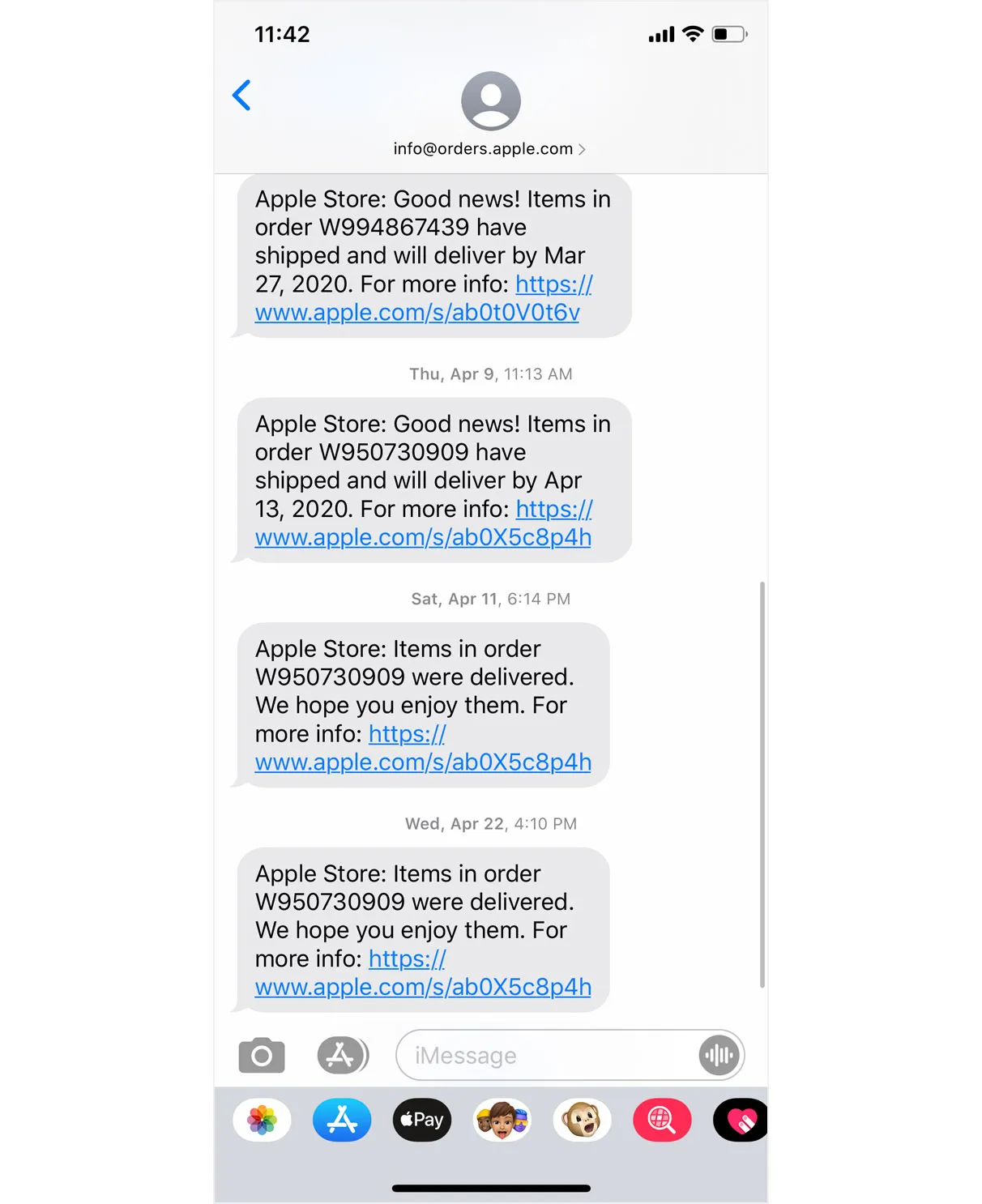
Delivery notification text messages also provide a great opportunity to ask customers for any feedback (whether it’s about your shipping process, the products themselves, or your communication). Additionally, you might use these messages to thank them for their business or ask them to review you online so you can build more credibility and social proof.
3. Receipt
Sending receipts through email or SMS is common among ecommerce brands, especially because customers aren’t shopping in a brick-and-mortar store where they might get a paper receipt as soon as they complete a transaction.
Just like you opt in for SMS shipping updates, you can choose to have an ecommerce brand text you your receipt as well—making it super convenient to see, save, and organize receipts on your phone. Some brands also use SMS for returns, allowing customers to text a picture of their receipt to start a return for a previous order.
4. Recurring billing
Businesses can also update their customers about recurring bills via SMS. For example, Affirm financing services sends their lenders a text message around the same time every month to let them know about an upcoming payment. This is the perfect way to help your customers stay on top of their monthly bills. After all, they're pretty much guaranteed to see your message within the same day. This is the type of transactional informative message that customers definitely appreciate.

Promotional SMS Examples
Again, sometimes the best way to get the creative juices flowing for your own promotional SMS messages is to see inspiration from others. Here are the main types of promotional SMS messages brands use to increase engagement and revenue—along with some examples from top brands.
1. New merchandise alert
98% of text messages are read by the end of the day, making SMS a great tool to alert customers about newly launched products.
This strategy will help you get quick sales—especially from your most loyal customers.
310 Nutrition did this with the following promotional message about new flavors.

By sharing this announcement—along with the specific flavors available and a simple way to purchase them immediately—the brand creates a great customer experience that subscribers will happily engage with.
2. Discount code
Sharing special discount and coupon codes is another great strategy for promotional SMS messages. Nearly 35% of consumers prefer to receive coupons and promotional codes from retailers via text message.
Theoretically, every customer in your SMS segment can receive a text message you send, which means high engagement and redemption rates on your coupon codes. Plus, it's easy for customers to use any discount codes you send while shopping right on their phone.
Here's a fun example from Super Coffee.

SMS is also a great channel for your brand's loyalty efforts. Did you know that 48% of U.S. consumers prefer SMS loyalty communication over direct mail, email, or in-app loyalty communications?
Combining two of your customer engagement and retention efforts is a great way to maximize results. Not only does it keep customers coming back to earn more points with your brand, but SMS also offers you the ability to reach people right away to update them about their point earnings and VIP status. This keeps your brand front-and-center in each customer’s mind. Check out how AMC theatres does this below.

3. Conversational SMS
Conversational SMS is an awesome tool your brand can use to build solid relationships with customers. This is because it’s not something every brand does, and sending something personal to your customers is a great way to make them feel special. Rather than using this type of SMS to increase sales and revenue, many brands lean on this message type to drive engagement and loyalty—which often turn into future purchases. Here are two brands doing this well: Maev and JUDY.
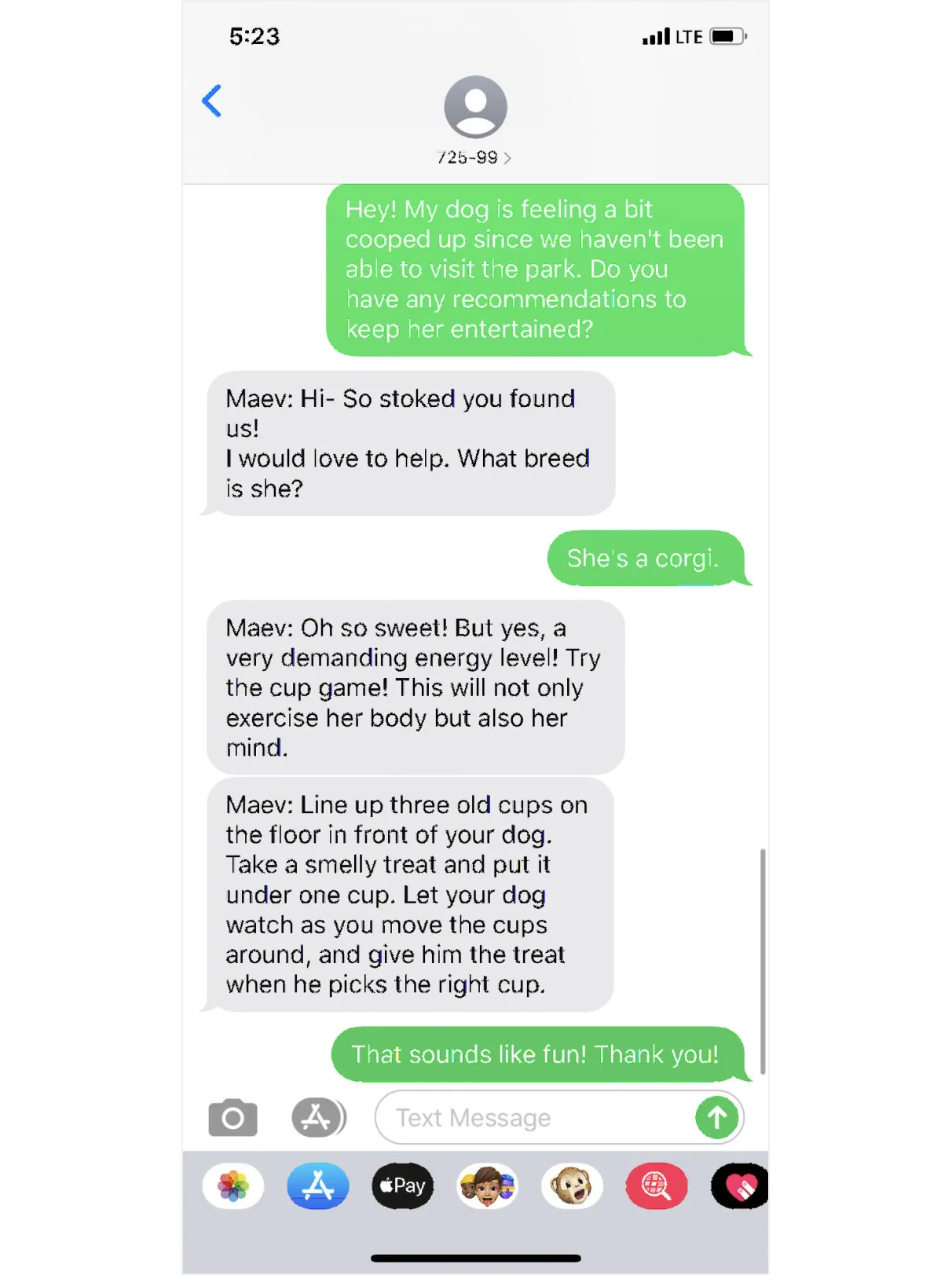
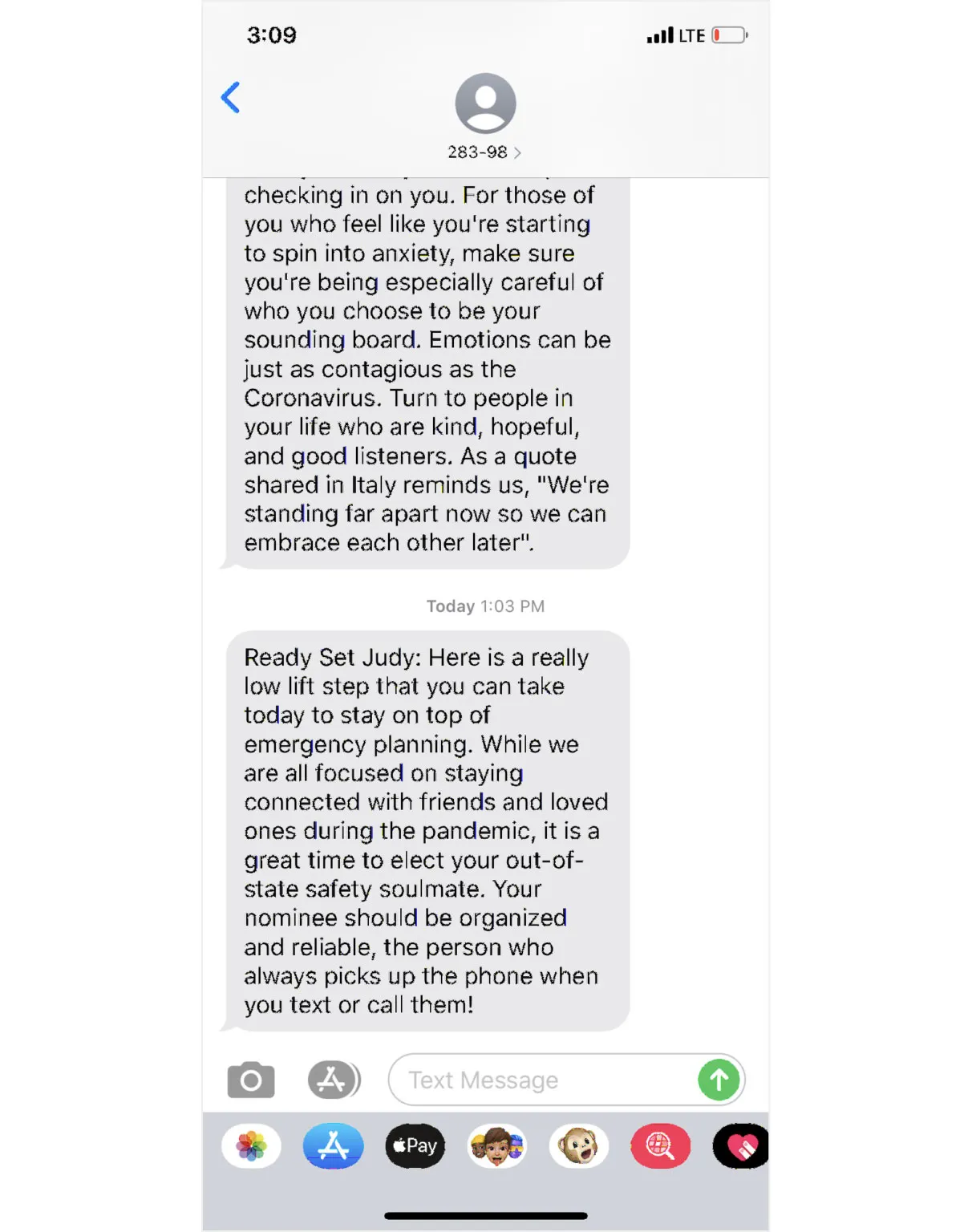
Integrate with a leading SMS tool to optimize your ecommerce marketing stack.
Now that you’ve learned the difference between promotional and transactional SMS, hopefully you see opportunities for your brand to use both message types to ramp up your marketing strategy and reach your customers directly. Whether you use SMS marketing for promotional or transactional purposes, you’re guaranteed to engage with your audience in a way that’s personalized and efficient.
Also, when you can trust an experienced platform to ensure your Shopify store is sending optimized, TCPA-compliant SMS messages, it makes your marketing efforts way easier. This is why apps like Postscript are a great tool for any ecommerce brand hoping to leverage SMS.
With Postscript as your SMS marketing partner, your ecommerce brand can quickly and easily build a subscriber list, automate your text marketing based on user actions, segment your audience to create personalized content, send unique campaigns, have two-way conversations, track revenue and ROI, and so much more.

